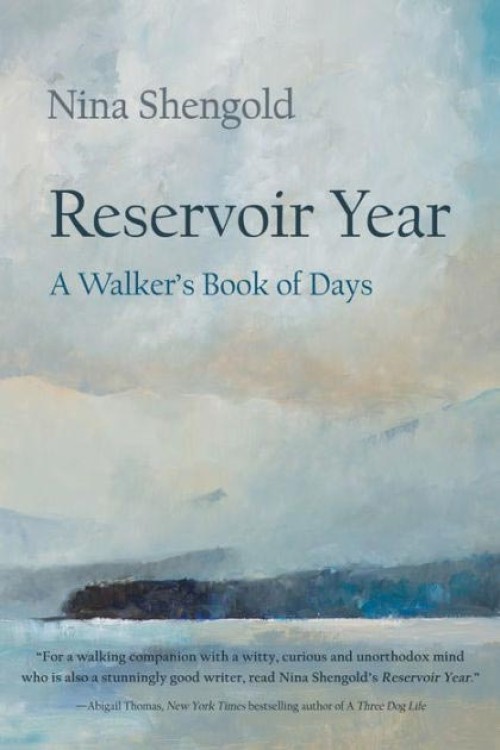by Nina Shengold
Syracuse University Press, 2020
As an enthusiastic pedestrian, I was immediately drawn to the subtitle for Reservoir Year: A Walker’s Book of Days. I liked the premise, too: deliberately walk every day at the same place for a year. Many of us do walk the same places every day, but not purposefully or mindfully, as this memoir recommends.
Shengold was initially motivated to start walking at the Ashokan Reservoir near her home when out-of-town visitors named it as their favorite sightseeing stop. Having recently lost her dog, and still grappling with her daughter going off to college, Shengold realized she needs to get out: out of the house, and out in nature. Although characterizing herself as poor at resolutions, she slowly became addicted to a daily journey, seeking whatever might be around the bend of each day.
Reservoir Year is organized into four sections by season and is sparingly illustrated with hand-colored linocuts and line drawings. Every day has an entry, ranging from a single sentence to several pages in length. The book starts in September. I found this stylistic effect – beginning with the season when many natural processes are winding down for a winter hiatus – an appropriate pairing for Shengold’s initial state of reflection. As the book progresses into spring and summer, she re-connects with the natural world as it re-awakens.
The particulars of Shengold’s nature preoccupations are found in every passage. She identifies wildflowers as they bloom and fade through the seasons, records bird and mammal behavior as she encounters them, and often attempts to paint the sky in words. Eagle sightings, particularly of the female who sees two chicks fledge by the end of Shengold’s reservoir year, impact her like a personal message from the universe.
Shengold treats the people she encounters like “wildlife” – recording human behaviors and interactions alongside bird sightings. She often draws parallels between human and animal actions, although she is more likely to be annoyed by the presence of humans. There is honesty to her now-cranky, now-pleased reaction to people that feels authentic. We are meeting someone like ourselves, walking through the journey of life, sometimes trudging and sometimes skipping.
Shengold avoids the pitfalls of hackneyed nature writing by mingling her observations on the spectacular with her own brand of open-minded appreciation for the mundane, often to subtly humorous effect. She’s as likely to comment on newborn goslings as on the poop their flock leaves.
She also comments on the benefits of her year of walks: from losing long-held weight to being calmer and more centered in life. This book is her overture to all of us to get out and walk more, to appreciate the nature nearby, and to notice. For my part, I found that sitting down with Reservoir Year always provided a measure of the same calm that comes from walking.
While reading Reservoir Year, I had the nagging sense that it should feel unfulfilling. After all, it’s a book with few recurring characters, no real villains, and no plot. Instead, I found it an addicting read. The short day-by-day entries have the same effect as eating popcorn: light, subtly flavorful, sometimes salty, and you can’t stop at one.


